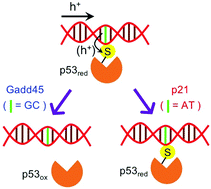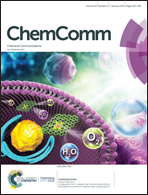A single AT–GC exchange can modulate charge transfer-induced p53–DNA dissociation†
Abstract
Using molecular dynamics simulations and electronic structure theory, we shed light on the charge dynamics that causes the differential interaction of tumor suppressor protein p53 with the p21 and Gadd45 genes in response to oxidative stress. We show that the sequence dependence of this selectivity results from competing charge transfer to the protein and through the DNA, with implications on the use of genome editing tools to influence the p53 regulatory function.



 Please wait while we load your content...
Please wait while we load your content...